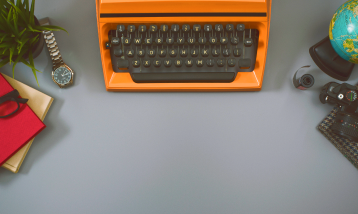
AI's Impact on Graphic Design: Transforming the Industry | Avantika University

11, November 2024
Through the automation of monotonous operations, the generation of fresh concepts, and the creation of inventive designs, artificial intelligence (AI) is dramatically changing the graphic design sector. As a result, graphic designers are already using AI mpact on graphic designing in novel ways to improve their productivity and quality of work.Graphic designing transforming through AI enables designers to concentrate on more creative elements by automating tedious activities like font selection, colour correction, and picture resising. In addition, it may produce fresh ideas for layouts, typography, and colour schemes, which can save time and result in more imaginative solutions.
Additionally, AI can produce creative designs that are hard or impossible to produce by hand, such as realistic 3D models, unique textures, and animated designs. Employers are increasingly looking for graphic designers with expertise in AI-powered tools and software, which is another way AI is changing the hiring and employment landscape. This is because AI impact on graphic designing is increasingly significant in the graphic designing transforming.
How Is Artificial Intelligence Used In Graphic Design?
In the context of graphic design, artificial intelligence refers to the process of creating images via machine learning. AI systems streamline the design process by supporting or completely replacing a designer. Artificial intellect is merely about technology imitating human intellect. AI technologies in graphic design may take over manual, labour-intensive chores and replace them with strategic thinking. They can also be used to analyse design trends, propose new directions, and automate repetitive operations.
Creativity and Innovation
AI enhances creativity by providing designers with tools to generate ideas and automate repetitive tasks. AI-powered software can suggest design elements, colour palettes, and layouts based on current trends and user preferences. This allows designers to focus more on innovation and less on mundane tasks, pushing the boundaries of what’s creatively possible.
Technical Skills
Incorporating AI into graphic design also means improving technical skills. AI tools can streamline complex processes like image recognition and vector manipulation, making it easier for designers to produce high-quality work. Learning to use these AI tools is becoming an essential part of any modern graphic designer's skill set, helping them stay competitive in the industry.
Work On Your Problem-Solving Skills
AI aids in problem-solving by analysing vast amounts of data to provide insights and solutions. For instance, AI can identify design issues and suggest fixes, making problem-solving faster and more efficient. This allows designers to quickly overcome creative blocks and technical challenges, ensuring a smoother workflow.
Staying Updated with Industry Trends
In a field as dynamic as graphic design, staying updated with industry trends is crucial. AI can help by constantly monitoring the latest trends and providing real-time updates. This information can be invaluable for designers creating contemporary and relevant work. Awareness of these trends helps designers produce content that resonates with current audiences and stays ahead of the competition.
Networking and Building Relationships
Networking is an essential aspect of a successful graphic design career. AI-powered platforms can facilitate networking by connecting designers with potential clients, collaborators, and other industry professionals. These connections can lead to new opportunities and partnerships, enhancing a designer’s career prospects and professional growth.
Balancing Creativity and Commercial Viability
One of the key challenges in graphic design is balancing creativity with commercial viability. AI can help by analysing market data and consumer behaviour, providing insights into what designs will likely succeed. This allows designers to create work that is creative and meets commercial demands, ensuring their designs are both innovative and profitable.
Social Media and Networking
Social media is a powerful tool for graphic designers, providing a platform to showcase work and connect with a global audience. AI can enhance social media strategies by analysing engagement metrics and suggesting the best times to post and the types of content that generate the most interest. This can lead to increased visibility and a stronger online presence, which is crucial for building a successful career in graphic design.
Project Management Skills
Effective project management is essential for delivering high-quality design work on time. AI tools can assist with project management by automating scheduling, tracking progress, and managing resources. This ensures that projects are completed efficiently and deadlines are met, freeing up more time for the creative aspects of design.
Conclusion
Incorporating AI into graphic design is transforming the industry, enhancing creativity, improving technical skills, and aiding in problem-solving. Staying updated with industry trends, networking, balancing creativity with commercial viability, leveraging social media, and honing project management skills are all crucial for success. By embracing these advancements and continuously evolving, graphic designers can thrive in this fast-paced industry. For those looking to further their education in graphic design, consider exploring programs at Avantika University. Located in Indore, it is one of the leading Graphic Design Colleges in Madhya Pradesh, offering comprehensive courses that keep pace with industry trends.

